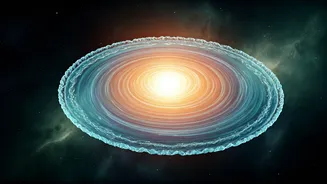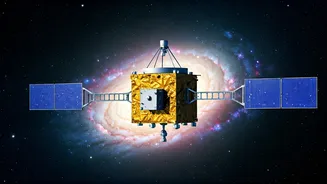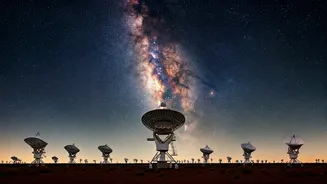AGN: Cosmic Powerhouses
Active Galactic Nuclei (AGN) are intense regions at the centers of galaxies, powered by supermassive black holes. These black holes devour surrounding
gas and dust, creating powerful jets and emitting vast amounts of energy across the electromagnetic spectrum. The behavior of AGN is not static; they change in brightness and type over time. These changes are crucial to understanding the evolution of galaxies. Researchers focus on understanding these changes to learn about the physical processes happening in these extreme environments. This includes the study of how the black hole accretes matter, how energy is released, and how the surrounding environment affects the AGN's properties.
Observing the Evolution
Scientists employ various methods to track the evolution of AGN. One primary method involves monitoring the changes in the light emitted from these objects. By analyzing the light's intensity, color, and polarization, researchers can infer the physical processes occurring within the AGN. They use different telescopes to observe AGN across multiple wavelengths, from radio waves to X-rays, obtaining a more comprehensive understanding. This multi-wavelength approach helps in detecting changes that might be missed by focusing on a single band. Time-series analysis, where data is collected over extended periods, allows the identification of patterns, cycles, and sudden variations, revealing the dynamic nature of AGN.
Unveiling the Mechanisms
The observed changes in AGN behavior are attributed to several mechanisms. One significant factor is the accretion rate of the black hole, which means how quickly the black hole swallows surrounding matter. When the accretion rate changes, the luminosity, and the type of the AGN also shifts. Changes in the structure of the gas and dust that surrounds the black hole are also key. This structure, sometimes referred to as the 'torus,' can obscure the central engine from view. Variations in this structure, potentially due to stellar collisions or interactions with the black hole's jets, can alter the AGN's appearance. Furthermore, magnetic fields around the black hole affect how energy is released through the jets, influencing the AGN's observed characteristics. These magnetic fields can twist and launch particles at relativistic speeds, causing observable changes in the emitted radiation.
Impact on Galaxies
The study of changing AGN has significant implications for understanding galaxy evolution. AGN are not merely passive objects; they actively influence their host galaxies. The powerful jets and radiation released by AGN can heat and disperse the gas and dust in the galaxy. This process, known as feedback, can regulate star formation within the galaxy. By observing how AGN influence their surroundings, scientists learn how galaxies grow and evolve. For example, AGN feedback may suppress star formation, preventing a galaxy from becoming too massive. Additionally, the AGN influences the overall shape and composition of the galaxy by clearing out the gas and affecting the distribution of stars. Understanding the interplay between AGN and their host galaxies is crucial for a complete picture of galaxy evolution.
Future Research Directions
Future research on changing AGN promises exciting discoveries. One key area is the development of advanced observational techniques. Telescopes with increased sensitivity and higher resolution, such as the James Webb Space Telescope, allow scientists to observe AGN in unprecedented detail. This allows them to monitor changes in their behavior over shorter timescales and at higher precision. Another area of focus is the refinement of theoretical models. Simulations that include complex physical processes, such as magnetic fields and gas dynamics, can help to explain observed AGN behavior. These simulations provide a valuable framework for interpreting observational data and testing hypotheses. Scientists will continue to combine observations with theoretical models to enhance our understanding of these dynamic and impactful cosmic objects.











